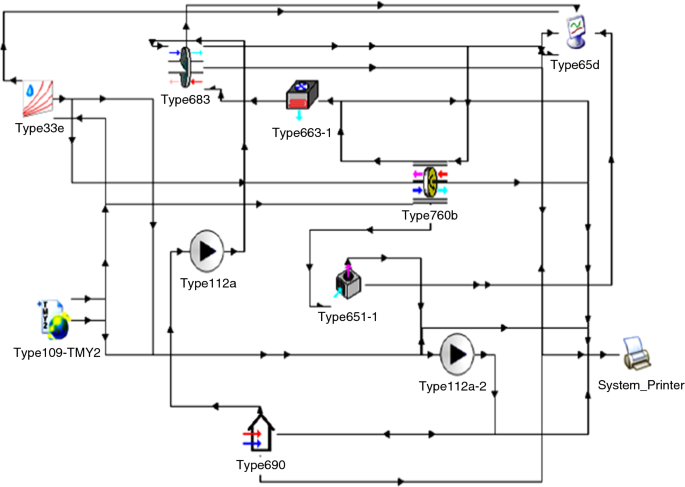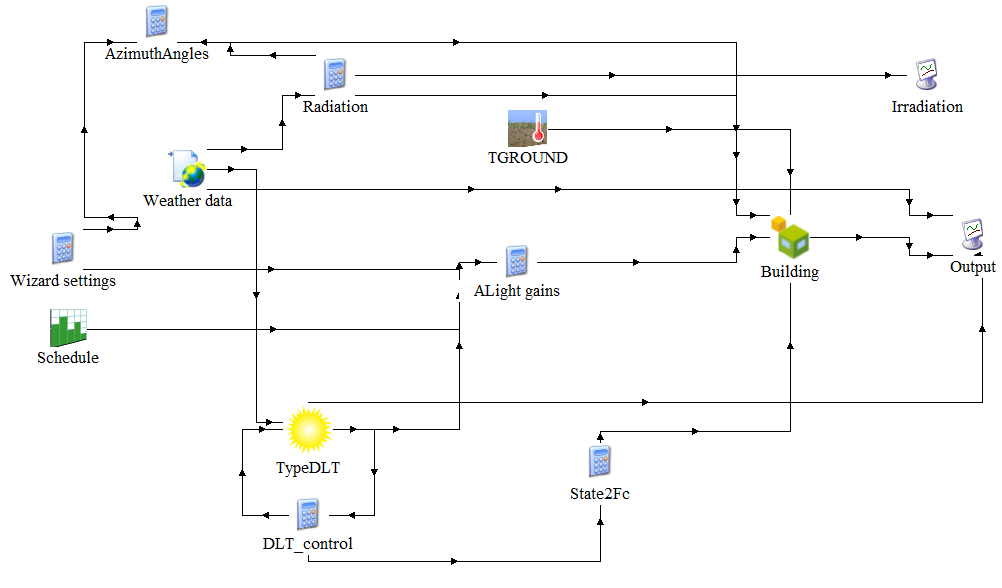

#TRNSYS DOCUMENTATION ISO#
ISO 9806:2017 Solar energy - Solar thermal collectors – Test methods. ISO 9806:2013 Solar energy - Solar thermal collectors – Test methods. TRNSYS Type 832 v5.01, Dynamic Collector Model by Bengt Perers. Haller, M., Perers, B., Bales, C., Paavilainen, J., Dalibard, A., Fischer, S., Bertram, E., 2013.

Progress in Photovoltaics: Research and Applications 16, 307–315. Assessing the outdoor operating temperature of photovoltaic modules. In case of PV modules, the PV cell temperature is calculated by the Faiman model (Faiman, 2008) or from NOCT conditions. 2), according to the electrical performance model of Lämmle et al.

standard components are well documented within TRNSYS and are open source 12.
#TRNSYS DOCUMENTATION SOFTWARE#
The BEopt software finds these optimal and near-optimal designs based on. A TRNSYS (TRaNsient SYstem Simulations Tool). In case of PVT collectors, the PVT cell temperature T_cell is calculated via an equivalent thermal network with an internal heat transfer coefficient U_(cell-fl), which connects the PVT cell temperature with the mean fluid temperature T_m of the PVT collector (see Fig. TRNSYS simulation engines and uses a sequential search technique to automate the process of identifying optimal building designs along the path to ZNE. The major difference between the calculation of PV modules and PVT collectors in this approach results from the cell temperatures, which are determined by the fluid temperature in PVT collectors and by a steady-state module temperature in PV modules. for a comparison of the electrical yield of a PV module and PVT collectors using identical PV cells. As the electrical mode of operation has a significant impact on the thermal efficiency, the thermal performance coefficients for the thermal power output calculation of the PVT collector should be determined in MPP mode (Lämmle et al., 2017).Īs addition, the model includes a PV mode to simulate PV modules based on the same performance model, e.g. Updates include improvements to the TRNSYS Simulation Studio, the addition of new. It is especially developed for the connection with thermal models which are based on the quasi-dynamic model of ISO 9806:2013 (ISO 9806, 2013) or ISO 9806:2017 (ISO 9806, 2017), e.g. The following document explains the updates for the new TRNSYS version 17. The main idea behind this model is to develop a PV performance model in TRNSYS, which can be coupled to existing models of solar thermal collectors or absorbers for the calculation of the electrical power output of WISC and covered PVT collectors (see Fig.
#TRNSYS DOCUMENTATION LICENSE#
See the LICENSE file for license rights and limitations (MIT). Meteonorm (refer to Volume 8 of the documentation for more details on Weather Data). Type835 is a PV model for the coupling with solar thermal absorber and collector models as PVT model developed for use in TRNSYS 17. TRNSYS is a complete and extensible simulation environment for the.


 0 kommentar(er)
0 kommentar(er)
